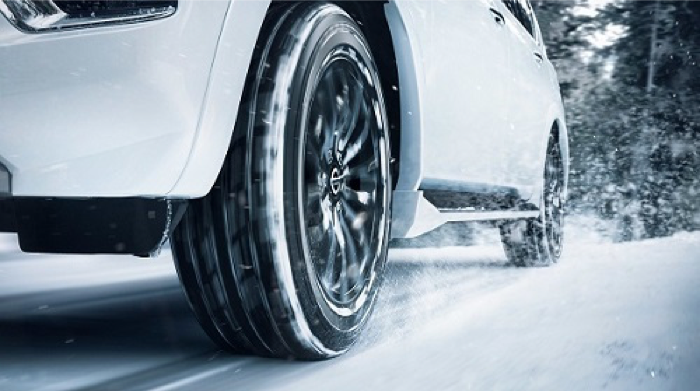2 min read
Should You Take an At-Home Genetic Test?
You have a hunger to know more about yourself and your family’s history or determine if you’re at greater risk for a life-altering affliction like...
Our branches will be closed on 1/19/26 in observance of Martin Luther King Jr. Day. We will re-open with normal business hours on 1/20/26. Thank you!
First Federal Bank will never call, text, or email you to ask for your online banking username, password, or security codes. If you receive a call from someone requesting this information, do not provide it. Call 877-499-0572 for assistance.
Manage your everyday finances with convenient accounts, flexible cards, and personalized service designed to fit your life.
At First Federal Bank, we offer flexible mortgage solutions for almost any situation, helping you secure the right financing for your dream home.
Business banking offers secure financial management, streamlined transactions, credit options, and tools to help businesses grow efficiently and sustainably.

 With winter comes the annual discussion about whether winter tires are worth the extra cost. What makes winter tires different from all-season tires? How cold or snowy does the weather need to get to justify using winter tires? Is all-wheel drive enough? Are all-season tires enough? The short answer to all of these questions is if you live in a cold climate, you probably need winter tires. Here are some conditions to consider:
With winter comes the annual discussion about whether winter tires are worth the extra cost. What makes winter tires different from all-season tires? How cold or snowy does the weather need to get to justify using winter tires? Is all-wheel drive enough? Are all-season tires enough? The short answer to all of these questions is if you live in a cold climate, you probably need winter tires. Here are some conditions to consider:
How do all-season tires compare?
All-season tires offer a compromise between summer and winter tires. Their name has led to the belief they are good enough for driving in winter conditions — but Joe Maher, a Continental Tire product manager whose specialty is winter tires, says the nomenclature is almost meaningless. “A dedicated winter tire has to pass a legal standard in the U.S. that sets a minimum traction standard on snow,” he explains in an interview with Road and Track. On the other hand, the standard for all-season tires is very low. They might be close to winter tires, Maher says, but could just as well be close to summer tires that would be unsafe to drive in a cold climate.
According to testing by Edmunds.com, all-season tires perform much better than summer tires at accelerating and braking on snow, but winter tires do even better. From 40 mph, their test car equipped with winter tires slowed to a stop in 28 fewer feet than when equipped with all-seasons.
Isn’t all-wheel drive enough?
It’s a common misconception that all-wheel drive is enough to provide traction in low-grip conditions, such as those brought upon by snow. However, all-wheel drive works by redistributing excess power to wheels that still have grip. This is a nice perk in winter weather when trying to get a car moving forward, but has no effect on its ability to turn or slow down. “AWD sedans neither stop nor turn any better than their two-wheel drive cousins,” says Warren Clarke, contributor for Car and Driver. He also warns AWD systems can lead drivers to, “overestimate how much traction there is and drive too fast for the conditions.”
Winter tires have special rubber
Winter tires have unique rubber designed to handle cold better than other types of tires. While tread stands out more visually and is key to digging into snow to find purchase, the type of rubber compound is arguably more important. According to Steve Bourassa, director of products at Nokian Tire in the U.S., tires have what is known as a “glass transition temperature.” This is the temperature at which a tire’s rubber “gets very, very hard and very brittle, and it will start to crack,” Bourassa says in an interview with Road and Track, leading to the sensation of driving on glass.
Winter tires are designed to operate at temperatures below 50 degrees Fahrenheit, ensuring they continue to flex and provide grip. Because of this, snowy weather is not required to justify winter tires. It’s enough that it gets cold.
Winter tires have special tread
The most visually striking aspect of winter tires is their unique tread. Unlike regular tires, whose grooves are mainly designed to disperse water, winter tires have extra tread depth and unique tread patterns that reduce the buildup of snow on the tire, as well as dig into the snow to find the asphalt below. “Winter tires also feature an increased number of biting edges and…thousands of tiny slits in the tread that provide traction on ice,” Bridgestone explains.
If you live in an area where temperatures routinely drop below 50 degrees Fahrenheit, you would be well served by switching to winter tires during those cold months — even if your car is already equipped with all-season tires and an advanced AWD system.

2 min read
You have a hunger to know more about yourself and your family’s history or determine if you’re at greater risk for a life-altering affliction like...

New technology can make life easier, and the rise of smart appliances simplifies so many aspects of daily living. From the way you cook to how you...

Following a healthy meal regimen is challenging when your family is always on the move. Sitting around the dinner table is replaced by a detour to a...
Manage your accounts, make payments, and more.
Open an account with us.